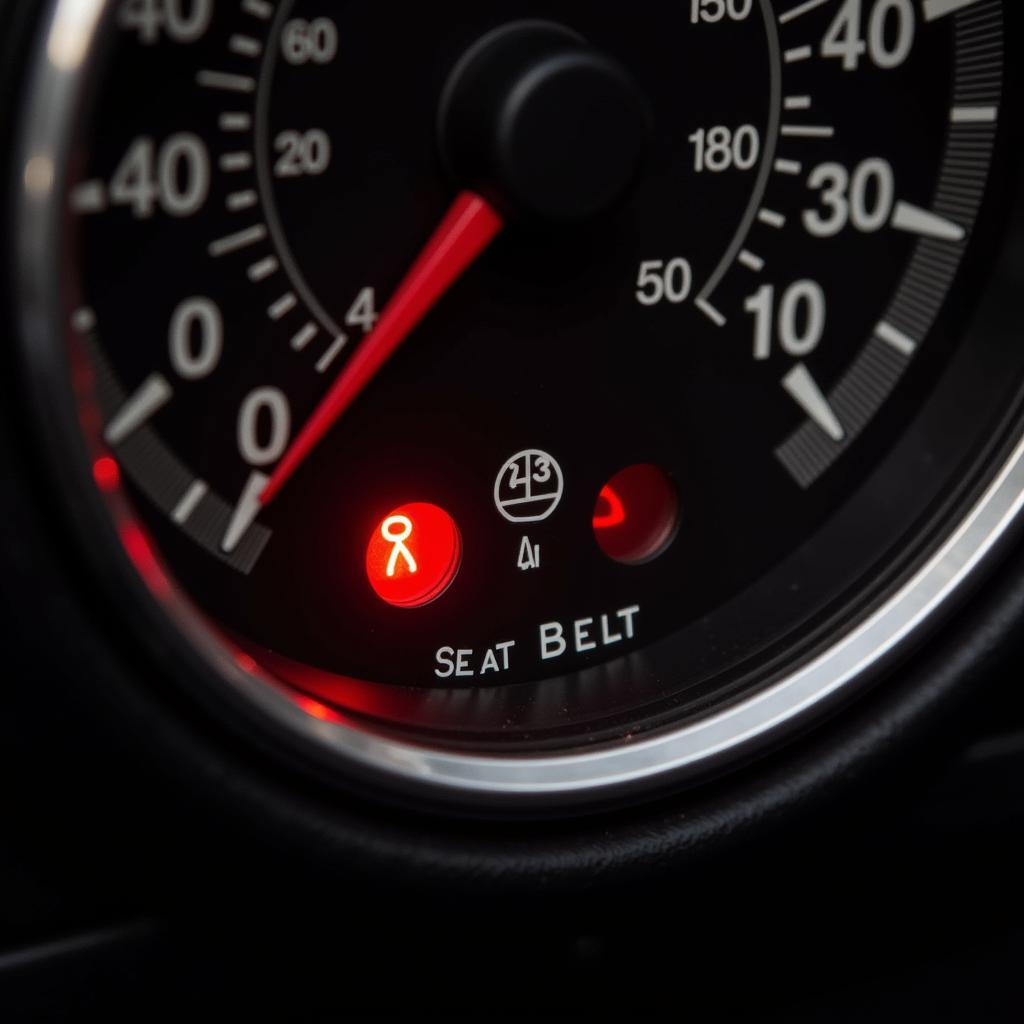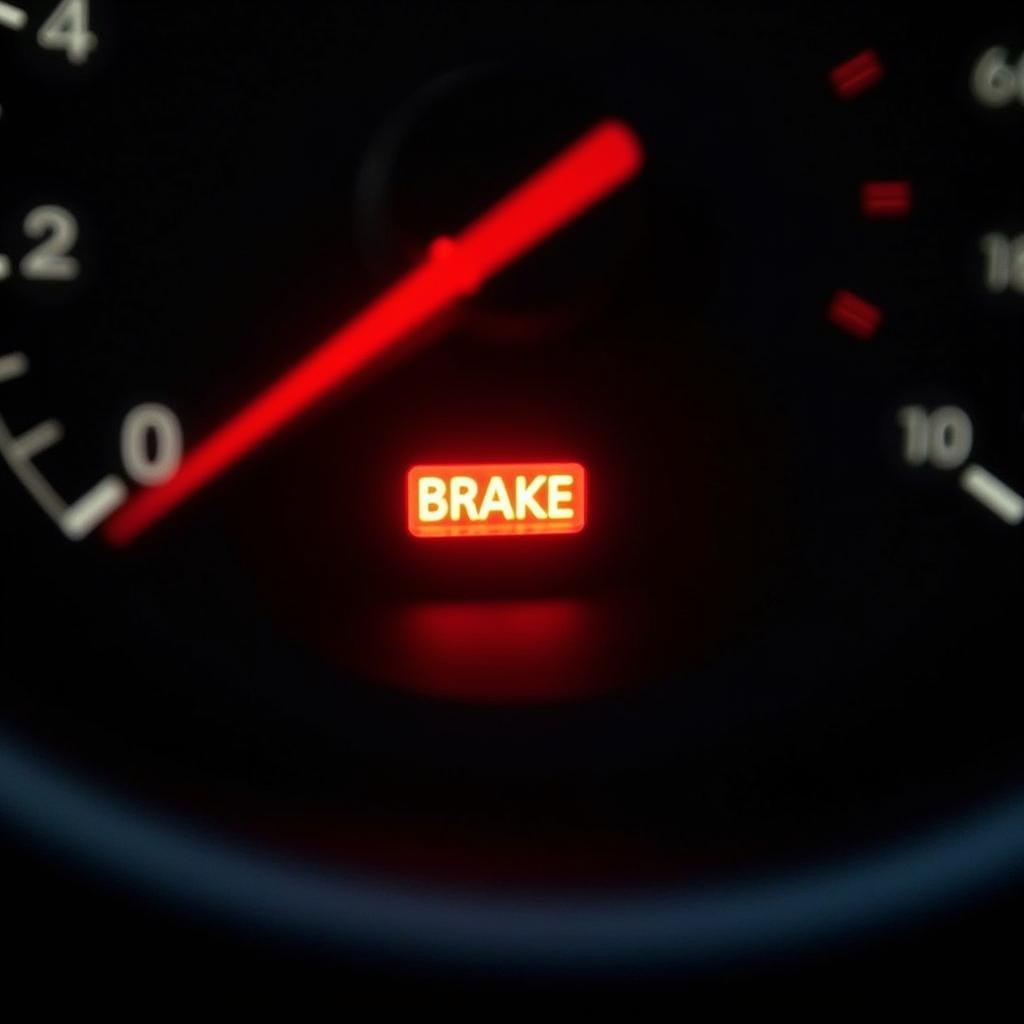The illumination of your brake system or ABS warning lights can be a nerve-wracking experience for any driver. These lights are your vehicle’s way of signaling a potential problem within these crucial safety systems. Understanding what triggers these warnings and how to address them is essential for safe driving.
Deciphering the Dashboard: Brake System vs. ABS Warning Lights
While both relate to your vehicle’s braking capabilities, the brake system and ABS warning lights signify different issues:
-
Brake System Warning Light: This light, often appearing as a red circle with an exclamation mark or the word “BRAKE,” can indicate a few different problems.
- Low Brake Fluid: This is the most common culprit. A leak in the brake lines can lead to a loss of hydraulic pressure, compromising braking efficiency.
- Worn Brake Pads: Most modern vehicles have sensors that trigger the warning light when brake pads wear thin, signaling the need for replacement.
- Hydraulic System Issues: Problems within the master cylinder or brake lines can also trigger this warning, requiring immediate attention.
-
ABS Warning Light: The ABS or Anti-lock Braking System light, typically represented by the letters “ABS” encircled, indicates a problem within the ABS system. It’s important to note that this light may illuminate alongside the brake system warning light.
- ABS Module Malfunction: A faulty ABS module can disrupt the anti-lock braking system’s ability to prevent wheel lockup during hard braking.
- Wheel Speed Sensor Issues: The ABS relies on wheel speed sensors to function correctly. A malfunctioning or dirty sensor can trigger the warning light.
Common Causes and Troubleshooting Tips
Here’s a closer look at common reasons behind these warning lights and how you can approach the issue:
1. Low Brake Fluid
- Symptoms: Spongy brake pedal feel, requiring you to press the pedal further down than usual to stop.
- Troubleshooting: Carefully check your brake fluid reservoir. If the fluid level is low, add the appropriate brake fluid as specified in your owner’s manual. However, simply adding fluid won’t fix a leak. It’s crucial to have your braking system inspected for leaks and repaired by a qualified mechanic.
2. Worn Brake Pads
- Symptoms: Squealing or grinding noises when applying the brakes, decreased braking responsiveness.
- Troubleshooting: If you suspect your brake pads are worn, it’s best to have them inspected and replaced by a professional. Driving with worn brake pads compromises your safety and can lead to more costly repairs down the line.
3. ABS Module or Sensor Issues
- Symptoms: ABS light illuminated, potentially accompanied by a pulsing sensation in the brake pedal during braking.
- Troubleshooting: Diagnosing ABS issues often requires specialized diagnostic equipment. It’s recommended to take your vehicle to a qualified mechanic, preferably one specializing in automotive electronics or brake systems. They can accurately pinpoint the issue within the ABS system and perform the necessary repairs.
4. Faulty Brake Light Switch
- Symptoms: Brake lights might not illuminate when the brake pedal is pressed, cruise control may malfunction, or the vehicle may not shift out of “Park.”
- Troubleshooting: While not directly related to the brake system’s hydraulics, a faulty brake light switch can disrupt various systems linked to braking. Replacing this switch is usually a straightforward repair for a mechanic.
“Many drivers underestimate the importance of regular brake system inspections,” says John Smith, a certified automotive technician with over 20 years of experience. “These systems are critical for your safety, and early detection of potential issues can prevent costly repairs and keep you safe on the road.”
Utilizing Remote Diagnostics for Advanced Troubleshooting
In today’s digitally connected world, remote diagnostics and software solutions play an increasingly important role in vehicle repair. If you’re experiencing issues with your brake system or ABS, remote diagnostics can provide valuable insights:
- Scanning for Trouble Codes: Remote diagnostic tools can connect to your vehicle’s onboard computer, reading diagnostic trouble codes (DTCs) stored within. These codes provide clues about the nature of the problem.
- Live Data Monitoring: Some remote diagnostic services offer live data monitoring, allowing technicians to analyze the performance of various sensors and components within the brake system in real time.
- Software Updates and Calibration: In some cases, brake system issues can stem from outdated software or require calibration. Remote programming services can address these issues without the need for a physical visit to a repair shop.
abs and brake system warning lights
When to Seek Immediate Professional Help
While some brake-related issues might seem minor, it’s crucial to remember that your brakes are paramount for your safety and the safety of others on the road.
Seek immediate professional help if you experience any of the following:
- Complete Loss of Braking Power: If your brake pedal goes all the way to the floor with little or no braking force, stop the vehicle as safely as possible and call for a tow truck.
- Pulling to One Side When Braking: This could indicate a serious issue like a stuck caliper or a brake hose failure on one side of the vehicle.
- Unusual Noises When Braking: Grinding, screeching, or clunking sounds when applying the brakes often signal a significant problem requiring immediate attention.
Conclusion
Addressing brake system and ABS warning lights promptly is not just a maintenance task; it’s a vital safety precaution. Understanding the potential causes and knowing when to seek professional help can save you from costly repairs and, most importantly, ensure a safer driving experience.


